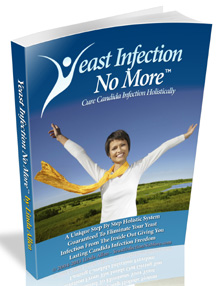Vaginal Yeast Infections - The Facts
Free Video Reveals 1 Weird Tip To Quickly Cure Your Candida Overgrowth & Enjoy Permanent Freedom From Yeast Infections In As Little As 12 Hours - Guaranteed!
>> Yeast Infection Guaranteed Treatment Click Here <<
Vaginal yeast infections send more women to the doctor than just about any other cause. Unfortunately, many women have to keep going back to the doctor because the infection returns. If you?re one of those women, you know that a yeast infection is no fun at all, and you?re ready to do whatever it takes to keep from having another one.
According to recent research, the incidence of vaginal yeast infections has doubled over the last 20 years, possibly because of changes in lifestyle, environmental changes, or mutations in the yeast organism itself. No one really knows for sure why the incidence of infections is increasing so rapidly.
Since most of us are only aware of yeast when we get a vaginal infection, many people don?t realize that over 10,000 people in the United States die each year from fungal infections caused by the same organism that makes our crotches itch and burn.
The yeast that is responsible for vaginal infections and oral thrush is a tiny fungus called Candida albicans. Occasionally, a yeast infection is caused by a form of Candida yeast other than the common C. albicans. These yeasts include C. dubliniensi and C. stellatoidea. Tests can be done to determine what type of yeast is causing an infection, but infections by yeasts other than Candida albicans are rare.
Candida is the most common type of fungal infection in humans, and it can lead to serious health problems for some people. A yeast infection can even be deadly in people with compromised immune systems. For this reason, any woman who gets the symptoms of a yeast infection while receiving chemotherapy treatment for cancer should seek medical attention as soon as possible.
There are four common causes of yeast infections:
1. The balance of power between bacteria and yeast is disturbed. Bacteria help us by keeping the yeast in check, so if the bacteria are killed, a yeast population can explode out of control.
This can happen when antibiotics are used during an illness. A diet high in refined sugars and other carbohydrates can also upset the balance by favoring the growth of yeast and inhibiting the growth of bacteria. This imbalance can lead to a yeast infection in the mouth or vagina.
2. Changing hormone balances, (due to pregnancy, hormone replacement therapy during menopause, and oral contraceptives), can create the right conditions for a yeast infection.
3. Yeast infections can also occur when the patient?s immune system is compromised by an HIV infection, chemotherapy or radiation treatment, Lyme disease or organ transplant. Steroids can also slow the immune response and allow a yeast infection to take hold.
4. And finally, chronic yeast infections can be a symptom of a more serious underlying illness, such as diabetes, thyroid disorder, leukemia or AIDS. If your yeast infection keeps coming back, ask your doctor for a complete exam to rule out any underlying cause.
Unfortunately, the symptoms of vaginal yeast infections are very similar to other conditions that are caused by bacteria and parasites. While yeast infections are not usually dangerous in women with intact immune systems, a bacterial infection can cause permanent damage to your reproductive organs, and must be treated promptly.
This is why it is so important to get a medical diagnosis, even if you?ve had a yeast infection before. It?s also the reason why you should be very careful before treating an infection on your own ? up to two-thirds of the women who purchase over-the counter medications for yeast infections actually have a bacterial infection instead, and the anti-fungal medication won?t do any good. In fact, using anti-fungal medications when you don't need to can make future yeast infections more difficult to treat.
To make matters even more complicated, some ?natural? cures for yeast infections that you find on the Internet can actually push a bacterial infection up into your uterus and fallopian tubes, where it can cause permanent damage. For this reason, it?s important to learn as much as you can about vaginal yeast infections, and the other types of conditions that look just the same, but need to be treated differently.
Vaginal infections aren?t the most exciting subject in the world, but it?s important to be informed so you can make good decisions about your health. To learn more about Candida albicans yeast infections ? what causes a vaginal yeast infection, how to get rid of it, and how to keep it from coming back ? visit http://www.YourYeastInfection.com
Labels: acidophilus_yeast_infection, how_to_cure_a_yeast_infection_naturally, mouth_yeast_infection, yeast_infection_in_woman, yeast_infection_symptom_man

